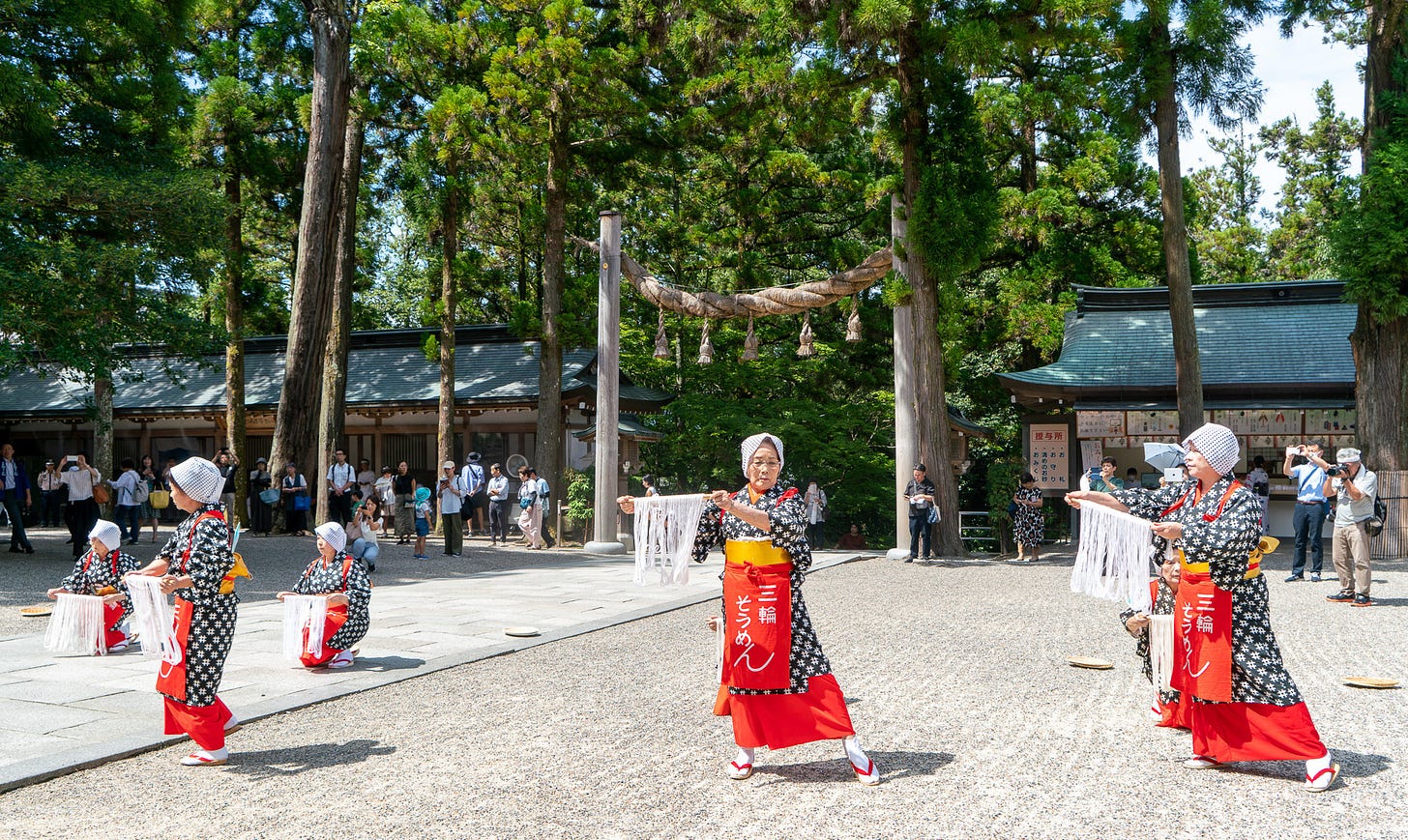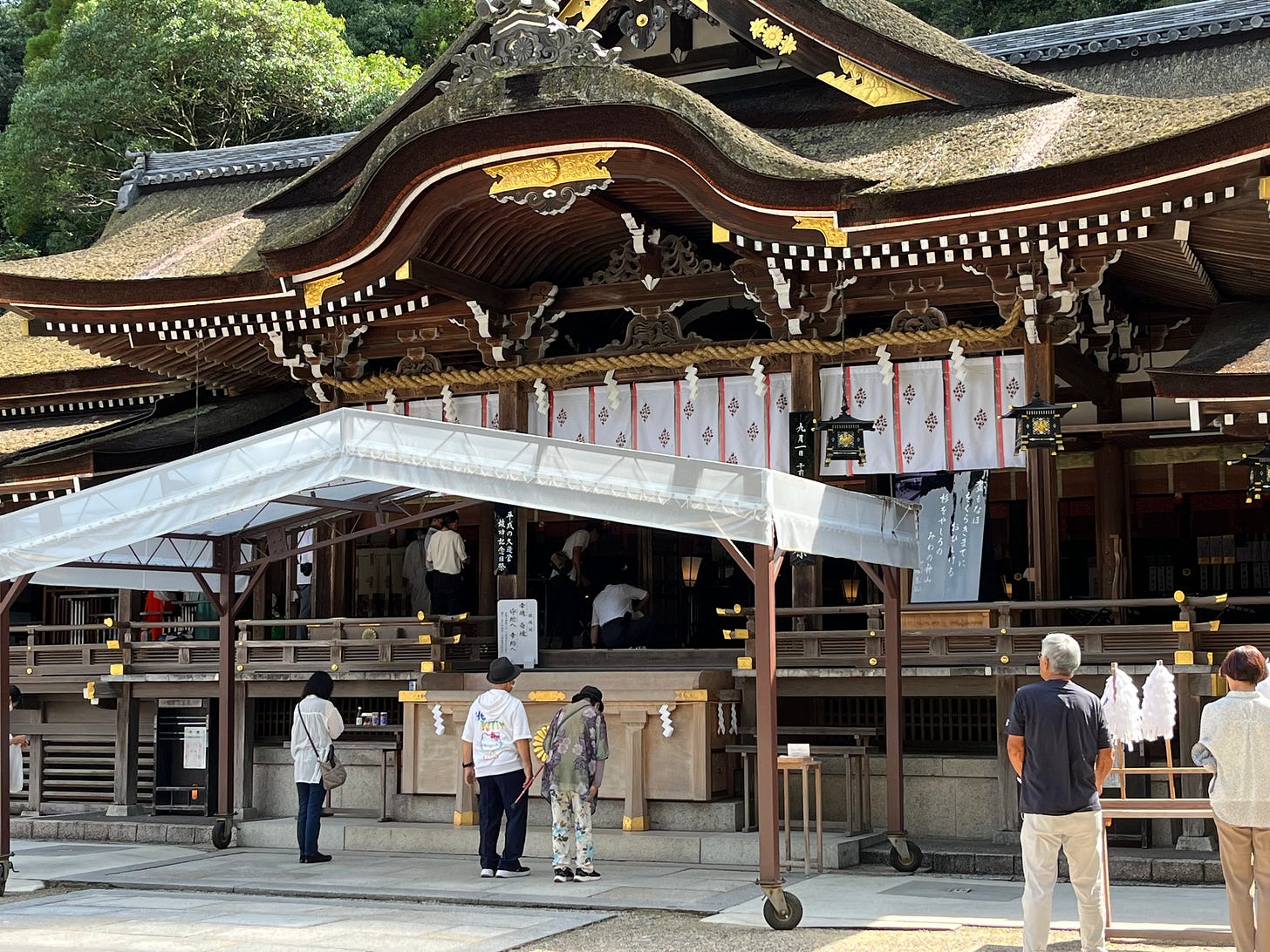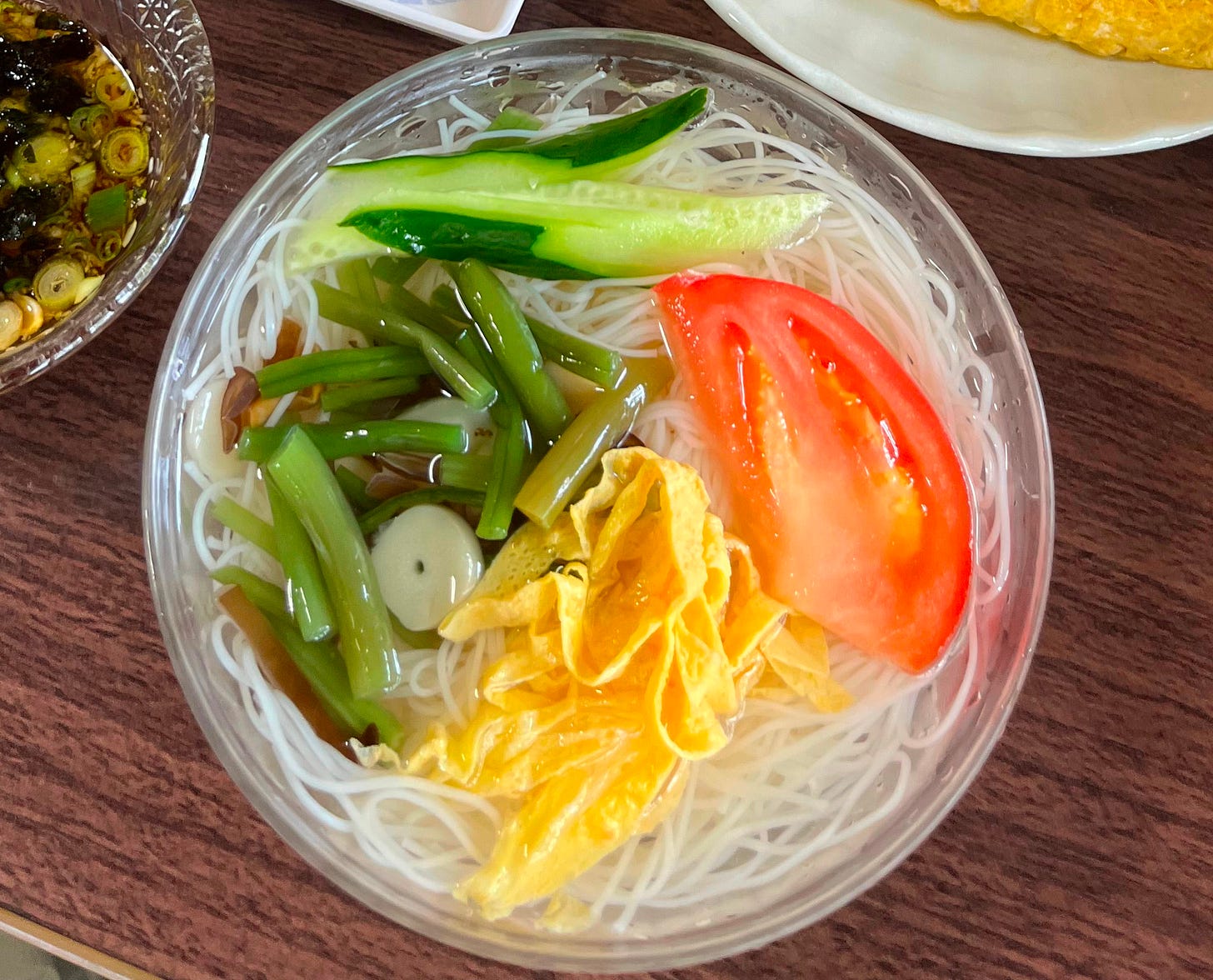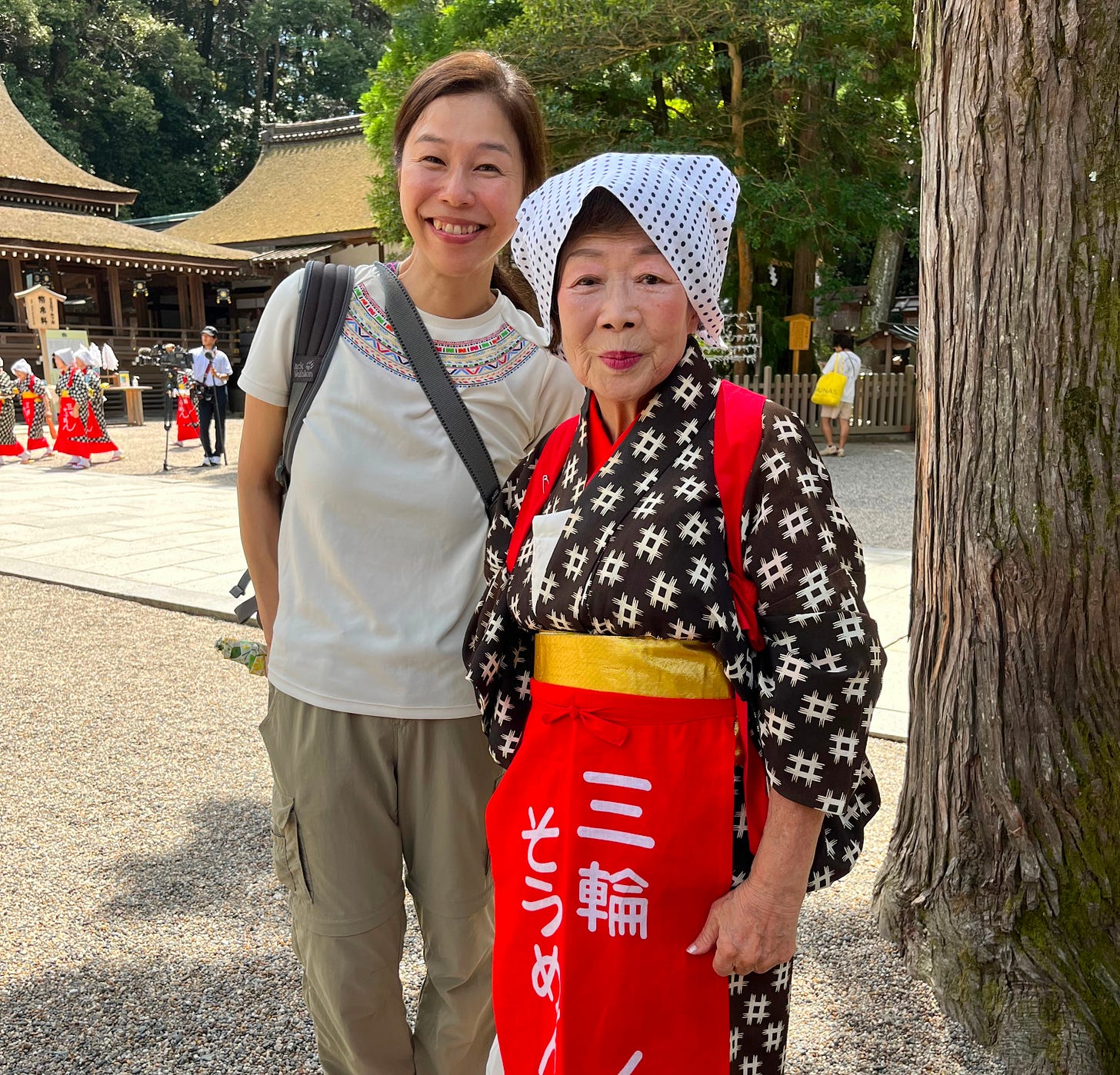Spiritual noodles
The city of Miwa is home to a ritual where commerce, cuisine, and kami intersect
Japan is widely seen as a high tech country, much loved for its anime, its manga, and its games. So to many, I gather, my nation feels hip, even cutting edge, at least when it comes to pop culture. But we Japanese know this stylish veneer sits atop a whole lot of tradition. Some of the old ways can be seen in daily life, such as our love for bathing or the preserved foods we eat, or in our language, in the form of politeness levels and set greetings. Other manifestations are physical, such as the ancient architecture of shrines and temples.
The ubiquity of religious sites in my country is particularly interesting, because so many Japanese claim not to be religious at all. This is a testament to how seamlessly spirituality has merged with modern secular society. Our spirituality is strong, but it leans away from things most Westerners associate with the word, such as faith, or sermons, or evangelism, or dogma. For most it is rooted in something simpler: respect. Our native traditions are infused by a general sense that there are things beyond our control, beyond even our ability to imagine, and that deserve to be acknowledged. You can see this in many aspects of Japanese life, if you know where to look. You can even find it in noodles.
Spiritual… noodles? I know, it sounds silly. But hear me out. I’m sure you know of ramen, and perhaps soba and udon too. But there’s another kind called somen. These delicate wheat noodles are a summertime favorite, quick to make and served cold with a light dipping sauce. Dry somen noodles are a staple in Japan, and the best, many believe, come from a town called Miwa. Somen and Miwa are as intertwined in my country’s culinary heart as sparkling wine and Champagne are in France.
Legend has it that the kami, as the manifold beings of Japanese belief are known, taught locals how to make noodles more than 1200 years ago. A devastating plague hit the area, followed by a famine. A local man prayed desperately to the kami for help. And he received a message – a remarkably detailed one. Grow wheat in the area; harvest and grind it; use the local spring water to form a dough; then stretch it carefully into thin threads. The genesis of somen noodles was a recipe from he heavens. So the story goes.
But there’s more to Miwa somen than legend. This is a place where spirituality and commerce intersect. The kami didn’t just give the people of Miwa a recipe for somen noodles. They also set the market price for them every year – even today! Locals call it Bokujosai. It’s a Shinto ritual held every February.
First, everyone associated with the production of Miwa somen gathers to thank the kami for blessing them with such a prosperous industry, and to pray for an abundant harvest of wheat that will sustain them for another year. The senior members of the association gather inside the prayer hall, dressed in their finest suits and ties, as the priest conducts a sacred ritual that has been held almost without fail since the 8th century. And here is where it gets interesting.
These captains of industry might well compete against each other to achieve noodle-market supremacy, or collude to control it in a somen cartel. But they do neither. They wait quietly as the priest prepares fifteen paper balls rolled from washi paper. Five are marked “high,” five “medium,” and five “low.” A roll of hemp fibers are waved over the pile until one of the balls sticks to it. This is removed and studied by the priest, who then carefully writes the result on a piece of paper and presents it to the assembled businessmen.
The businessmen watch these proceedings with rapt attention, because this will determine the wholesale price of somen for the year to come. Should it be “high,” this year’s price will be 12,000 yen per 18 kilogram box of noodles. If “medium,” the standard will be 11,900. And if it is “low,” the price will be just 11,800 yen.
After what seems an interminable wait, the priest presents this year’s results. The priest carefully unfolds a sheet inscribed with inkbrush calligraphy. What will it herald for this year’s somen marketplace?
In actual practice, the price set by the divination is only used as the reference for the first trade of the year. Everyone knows that is simply an opening; it won’t determine the final price – that’s up to market forces. Even still, the Miwa somen industry pays close attention to the divination, because it affects them psychologically. They listen, they respect – but crucially, they are not bound. It is a comfortably loose form of spiritual guidance. Which could well describe average Japanese folks’ approach to spirituality as a whole.
Every beginning has an end, and so too the noodle ritual of Miwa. In August, those involved with the local somen industry gather once more at Omiwa jinja shrine for another tradition: the Miwa Somen Festival of Thanks. Its climax is a dance performance by local women. Spirituality, divination, business – and an interpretive noodle dance? This was right up my alley. When I first learned of it, back when I was researching my book, I knew I had to go. So I did. I paid a visit two summers ago in 2023.
I’d read about the result of the somen price ritual in the newspaper. (It might not be front page news, but this is something that effects all of us, so it’s pretty widely reported.) 2023’s outcome had been “low.” At that time, Japan was still suffering the effects of the COVID-19 pandemic. The war in Ukraine, tragic enough in its own right, was just starting to affect the global economy. The cost of daily staples was spiraling upward, even as local wages stagnated. Superficially, a “lowball” must have come as a blow to Miwa’s somen makers.
But the kami had spoken. An interview I’d seen really drove this home. Instead of being upset, or angry, the spokesperson for the Somen Association interpreted the outcome as best they could, by spinning it in positive direction.
“In an era such as this,” they said, “we must join our hearts as one. Let us regard this not as a ‘low’ price, but rather use another interpretation of the same character and call it ‘stable.’ And let each and every one of us do our best.”
A magnificent, thirty-meter high torii gate towers over the rooftops of Miwa. I passed through it and into the thickly forested foothills of Mount Miwa, home of Omiwa Jinja shrine. It was a very hot summer day when I visited. A bright blue sky stretched overhead, punctuated by towering white cumulonimbus clouds of the sort we call nyudo-gumo.
The ritual inside the prayer hall was solemn. But after that, the mood grew celebratory. And what a celebration it was!
A group of local women dressed in traditional garb and bright red aprons took up positions in front of the shrine and began to dance in unison. Using threads of twine to evoke somen noodles, they pantomimed kneading the dough, then resting it, then stretching it into the noodles that, had they been real, would have been dried under the bright summer sun. The crowd laughed and cheered. Everyone was having a great time.
Although the outcome of the divination wasn’t really binding, it seemed to have an effect nevertheless. I sensed that, by involving the kami in their business, the somen makers attained a sort of security, a measure of courage to move forward – like a spiritual life-preserver to hang on to, in what was a very difficult time. And that, to me, is Japanese spirituality in a nutshell. It isn’t there to convert or convince. It just is, offering you and me, everyone and all of us, an opportunity to come together, have fun, and kindle a little gratitude for what we’ve got.
When I saw the ladies dancing and the crowd having fun, it made me feel that everything would be all right in the end, too. But most of all, it made me want to have a bowl of somen. And I suspected I wasn’t the only one.
I wrote a book about my experiences and adventures exploring Japan’s spirituality. It’s called Eight Million Ways to Happiness, and is due out in December of 2025. You can pre-order it here!









Your comment about Japanese saying they aren’t religious reminded me of a comment my Japanese guide in Tokyo made. I asked what percentage of Japanese people were Buddhist and what percent Shinto. She laughed and said, ‘I’d say about 80% are Buddhist, 80% are Shinto and at least 80% would not consider themselves religious’. We had quite a discussion after that before I finally ‘got it’ 😆
Wonderful, thanks so much.